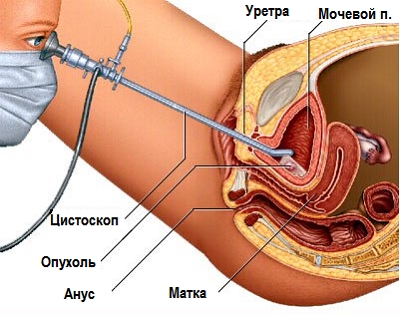Ureteroscopy — is a diagnostic procedure that is used to diagnose diseases of the urethra and bladder. Manipulation is carried out using a ureteroscope, which can have a different structure: the apparatus for men is longer and thinner, female ureteroscopes are wider and have a length of no more than 15 cm. Ureteroscopy is contraindicated in patients with urinary tract infections, especially during an exacerbation, as there is a possibility of infection spreading. Read more about the indications for ureteroscopy and the technique of the procedure on estet-portal.com in this article.
Advantages of ureteroscopy over other diagnostic methods
There are two types of ureteroscopy: irrigation, during which the bladder is filled with fluid to better visualize its walls, and ureteroscopy, in which & nbsp; instead of water, air is used to stretch the bladder.
The ureteroscopy procedure can be quite painful even when local anesthesia is used, and therefore some patients may be advised to undergo the procedure under anesthesia.
Male ureteroscopy is a more complex manipulation, which is associated with the presence of physiological curvatures of the urethra.
Ureteroscopy:
• the main stages of diagnostic ureteroscopy;
• ureteroscopy: main indications for the procedure;
• possible dangerous complications after ureteroscopy.
Key steps for performing a diagnostic ureteroscopy
The ureteroscopy technique includes several stages, namely:
• local anesthesia;
• treatment of the external opening of the urethra and the area around it with an antiseptic;
• selection of a tube of the required diameter;
• insertion of a gel-lubricated ureteroscope into the urethra;
• assessment of the condition of the mucosa, detection of strictures, neoplasms, erosion;
• removal of the ureteroscope.
Normally, the urethral mucosa has a pink color, a smooth and shiny surface without visible deformations and integrity violations.

Ureteroscopy is indicated for urinary incontinence, this pathology is especially common in women. Also, the procedure is carried out if a chronic urinary tract infection is suspected. Of particular importance is ureteroscopy in the diagnosis of tumors, cysts, & nbsp; diverticula and urethral strictures. The procedure allows you to diagnose the presence of stones in the bladder and urethra. Ureteroscopy helps to determine the presence of erosions and granulation of the urethral mucosa. The study allows to confirm tuberculosis, syphilis, candidiasis and urethral herpes.
Possible dangerous complications after ureteroscopy
Ureteroscopy is a fairly safe procedure that allows you to fully assess the condition of the urinary tract. Patients after the procedure may experience discomfort in the urethra, pain when urinating, blood in the urine.
Ureteroscopy, like any other invasive examination method, is subject to complications such as infection and bleeding.
Dangerous complications include urethral rupture and urosepsis. There is also an opinion that urethral strictures can also be caused by ureteroscopy.
Read also:
Urethritis in men: causes, symptoms and treatment of the disease







Add a comment